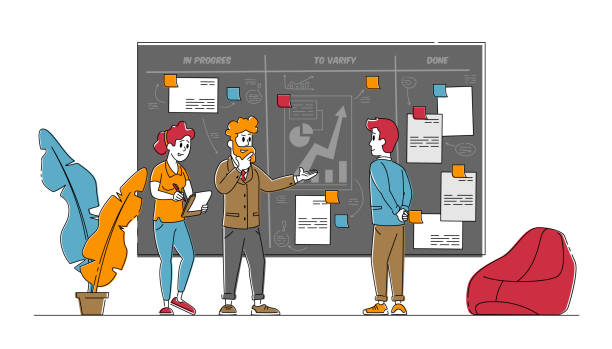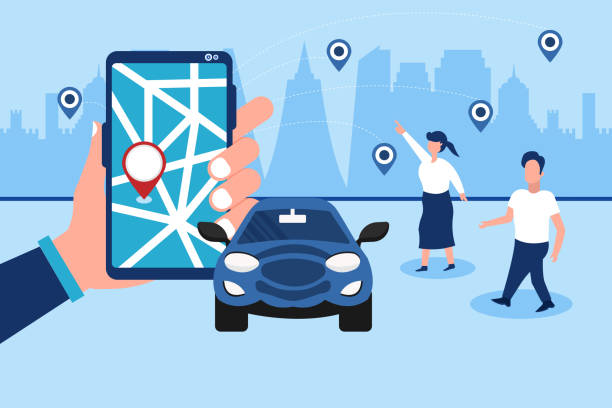What is the App Development Process?
Mobile app development is a simple and standard process. The app development process contains stages from ideation to execution and maintenance. There are many different technological and procedural approaches that can be used in the development of apps. The elements including resources, knowledge, market positioning, and team capacity will all play a role in success. Additionally, numerous changes and challenges arise during the app development process, such as Frequent User Testing (FUT), production cost limitations, and constrained deadlines.Pros of Business Drivers for Investing in a Mobile App
Investing in mobile apps creates numerous opportunities for businesses for engaging more customers. Below are some benefits of investing in mobile apps:Boosting Brand Exposure
A mobile app offers exposure to goods and services in a variety of ways. Social media features in your application are one of the finest ways to do that. You can frequently utilize social media platforms like Facebook and Instagram. You will quickly increase its appeal and boost user engagement including social elements in your app.
Data Analysis for Drive Growth
Users that download your mobile app onto their devices turn into a valuable resource for information that you can utilize to better understand their needs and tailor your services. Companies may gather, use, and leverage customer data with mobile apps. A mobile app gathers data on consumer behavior and preferences to utilize these insights and improve the effectiveness of your marketing plan. Understanding your target audience’s demands, wants, and motivations will help you identify who they are as users and which features or pathways are commonly used.Improved Visibility
Mobile apps offer businesses to increase their visibility which effectively builds brand recognition. You may routinely engage with your target market to build their trust and loyalty in mobile apps. Using mobile applications to promote and develop companies is thought to be such a successful technique. They raise the profile of your mobile app development company and make it easier for you to interact with your clients.Enhanced Customer Engagement
A mobile app investment also enables your company to be there for customers when they need you most. Customers will not be able to contact you at that time, which will cost you a potential transaction. Furthermore, when a mobile app offers a variety of communication and customer service choices, it especially helps to close the communication gap between customers and enterprises.Personalization and Retargeting
Mobile apps offered by companies to target their market go beyond simple software products that are handy and compelling. Additionally, they get to provide customers with a tailored experience that fosters an emotional connection. Your app can remind users to finish incomplete tasks by analyzing user behavior trends. Retargeting initiatives benefit greatly from the use of mobile apps. To keep each consumer aware of discounts and other special offers for the products they were interested in, it keeps track of their shopping and search histories.Remain Competitive
A mobile app for every business will soon become expected due to the ongoing expansion of mobile and constantly changing consumer behavior. A surefire strategy that maintains competition and establishes a powerful presence in your business is to develop a mobile app. They give companies the chance to distinguish out from the competition by creating an aesthetically pleasing and engaging atmosphere. Your competitors will most certainly integrate mobile apps into their company plans. As a result, any delay in app creation could cause a lag behind the competitors.What is the Mobile App Development Lifecycle?
The mobile app development lifecycle has various stages to create an app for your business. You have the option of downloading and installing these programs at a later time. They connect to remote computational resources through the device’s network capabilities. There are multiple stages in the mobile app development lifecycle as follows:
Pre-Launch
The primary idea and objective of an app have to be determined during the pre-launch phase. The success of the ultimate result depends on how well this stage is completed. An app’s functionality and purpose are envisioned from the start of this phase. Additionally, you must conduct extensive study and design planning to succeed.Frontend Development
Frontend development is the second phase of the mobile app development process. The way you work on an app’s functionality differs from UI/UX. The major goal here is to translate pre-launch concepts and design UX or UI into code. Developers must therefore make sure that interface components direct you to the correct locations and that data is stored for processing.Backend Development
Backend development is the opposite of frontend app development. And that’s where the last phase of the creation of the app happens. Its function is to assist with the development of the system architecture, databases, servers, application programming interfaces (APIs), security, and several other background operations. It accomplishes this by establishing the core code that enables the app to handle front-end actions.Post-Launch
All the stages of developing a mobile app are bookended by the post-launch stage. The key components of the mobile app creation process guarantee its usefulness and seamless operation. Additionally, app developers must pay close attention to app security that enables the discovery of vulnerabilities and any coding flaws before release.Mobile App Development Process
Most companies need mobile apps that enhance their productivity and efficiency. You will succeed if you follow the below-mentioned steps of the mobile app development process closely:Planning
Your first step should be to thoroughly research your market and the applications being used by competitors. Consider the goal of your app, your target market, preferred platforms, app development frameworks, and how you want to market it. You can choose and keep the budget by conducting early-stage strategic business analysis to help you identify the appropriate ROI, or return on investment, component.Design
App design aims for a smooth user experience with a beautiful aesthetic. Using mobile app features serves as a measure of its success. UI/UX design generates compelling user experiences and makes software dynamic, user-friendly, and spontaneous. The designing features needed architecture and workflow, wireframe, and technical utility and style.Prototype
Prototypes use static drawings that may be converted into click-through prototypes to show off the functionality of your mobile app. For simulating the user experience and app functions that the final product will need to have, prototypes are tremendously helpful. Prototype development methods are well worth the effort as they enable early design and functionality testing of your app. You can spot modifications to the app’s intended functionality with the help of prototypes. When the practical needs of an app are not carefully considered at the wire-framing stage, some businesses opt to construct prototypes.Development
The development phase covers everything from creating a working prototype to iteratively assessing it. The critical skills are rigorously tested as this stage progresses. The development stage is thereafter where the application is sent. All bugs have been fixed and taken care of. If the project is challenging, the enormous application is divided into smaller modules and handled in stages before everything is put together and an application is released. The two primary parts of the mobile app development process are the front-end and back-end server technologies.Testing
Systematic Quality Assurance (QA) testing is carried out throughout the mobile app development process flow ensuring applications are functional, dependable, and secure. You must create test cases that cover each component of app testing if you want to perform extensive QA testing on your app. Test processes are carried out using test cases, which are also used to monitor modifications for retesting and document testing outcomes for quality assurance. It is advised that you involve your QA team in the analysis and design phase. The development of precise test scenarios will benefit from understanding the functional requirements and goals of your app.Assurance
Some mobile app development companies skip over or undervalue this step in favor of the following SDLC phase release. However, you cannot be certain of the caliber of your mobile application without both automated and manual testing. Some checks may be performed automatically while others must be done manually to optimize the testing process. Fixing problems before release is always easier than coming back to this stage after an application has been published and has gotten bad user feedback.Product Release
The first step in releasing a native mobile app is to submit it to the Google Play Store for Android apps and App Store for iOS apps. You must register as a developer with Apple App Store and Google Play Store before you can release your mobile application. After being submitted to the App Store, iOS apps go through a review process that depends on the caliber of your application. You must give Apple a test user account if your app requires login as a part of the release procedure. However, Android app development lifecycle makes apps more accessible in the Play Store without going through a review process.
Maintenance
Use mobile analytics solutions and Key Performance Indicators (KPIs) to track app usage after it is published in the app stores to assess how well it performs. Encourage users to send your company regular feedback and suggestions for your app. To maintain user interest, quick maintenance, end-user support, and frequent software upgrades with improvements are essential. Mobile app updates must go through the same submission and review process as web applications. You have to update your app regularly for new mobile devices and OS platforms to keep up with technological advancements.What Do You Need to Know Before Starting the App Development Process?
It’s crucial to perform your research and plan everything from identifying your target audience to deciding your budget. Several important factors contribute to an app’s success and will enable you to develop a mobile app that endures by being aware of crucial elements.Do Market Research
Before beginning any assignment, research and development should always be done. You can gain important insights into the competitive landscape and current market situation by conducting in-depth market research. It helps with many strategies used and mistakes made by your rivals. After accounting for these errors, you can improve your strategy. Discover the needs of your target market, evaluate the actual demand, and take the necessary actions to meet those needs.Choosing In-House Development and Outsourcing
You must decide whether you will develop your mobile app internally or through an external development partner. The decision will mostly depend on whether your company has an experienced IT team and the capacity to undertake a mobile app project. It’s worth looking into other vendors who can help you achieve the objectives you have set out and construct a truly unique application for your business if you don’t have your developers or they are too busy with other tasks.Get Monetization Options
Making money from an app is one of the main reasons for creating an app. Your app can be made profitable in several methods, including premium apps that cost money, subscriptions, freemium apps, in-app advertisements, and products or services. It is crucial to carefully evaluate which choice is ideal for your app and target market. By being aware of your monetization possibilities and making the necessary preparations, you may raise the likelihood that your app will be profitable.Determine App Development Cost
The cost to build an app is influenced by a number of variables. Before establishing budgetary constraints, these factors must be thoroughly examined. In addition to the critical platform-building component, some components demand you to make some strategically sound judgments.- Check if logging is needed for users. A significant choice is to integrate login with social media sites.
- If you want to construct a personal profile within an app, specific guidelines should be laid out.
- You must create an API if you intend to integrate an app with your website. All of your friendly apps communicate with one another in this manner.
- Determining the functionality of mobile apps is as crucial as determining their design guidelines.
Find the Best App Development Company
You may create the designs yourself using development tools or you can base them on a brand-new data model. You can create applications using low-level coding, high productivity integrated mobile app development environment provided by the app builder. Finding the best mobile app development companies that examine the app development processes and get an idea of apps delivered by those companies. The mobile app development business you select will have a huge impact on how user-friendly and aesthetically pleasing your app is, thus execution will depend on them.
App Store Optimization (ASO) Plan
It’s time to optimize your app for visibility and downloads after you have uploaded it to an app store like Google Play or the App Store. The key components to take into account while optimizing your app for the app store are:- Application name
- Using relevant keywords
- More appealing graphics
- Write an app description
- Using social proof
Security Measures
If you have a mobile app that requires private information from a non-technical user to function, you must decide on security measures. It also outlines the information that must be acquired and its intended usage. Mobile app security has become a critical issue that cannot be ignored. Make sure you have procedures to gather, manage, and retain the actual user data as well as to handle any security threats that might arise.App Marketing
Marketing your app to the target audience is equally crucial, both to establish a strong presence in the app store and to influence audiences by letting them know that something important is coming their way. Marketers frequently follow widely accepted strategies, such as engaging in SEO operations for social media and app promotion. It is wiser to become an expert in mobile marketing hacking and make the appropriate decisions for your company.What are the Different Types of Mobile Apps?
Businesses must closely monitor emerging technologies if they want to use app technology to create improved consumer experiences. Understanding the app dynamics in-depth is essential for success in the app industry where app kinds are being created daily for various purposes. Despite the market having a wide variety of app kinds, we will only concentrate on comprehending Native, Web, Hybrid, and Progressive Web Apps (PWAs).Native Apps
Native apps are designed specifically for mobile devices’ operating systems. Thus, native Android or iOS mobile apps are available in addition to all the other platforms and devices. Native apps are typically created to maximize all of the tools and capabilities of the phone. The usage of the native device UI creates native apps that guarantee a high level of performance and a beautiful user interface. On the app stores tailored to each OS, native apps are readily available.Web Apps
Internet web browser windows can be used to access online apps or mobile web apps. The app doesn’t require any installation or storage space to be used. Apps for mobile web are simply adaptable to different screen sizes and devices. Both native and web apps have nearly identical features and responsiveness, one may easily mistake the web app’s responsiveness and functionality for that of a native application. There is no need to update the web app as these apps update themselves on the web-hosted servers and are not installed on your computer or smartphone.Hybrid Apps
Hybrid apps integrate the best features of both native and web apps. These apps can operate on devices with many operating systems and are created using web technologies like HTML, CSS, and JavaScript. Similar to native applications, hybrid apps are created on a single platform and made available through different app stores like Google Play Store and Apple App Store. The optimum time to design hybrid apps is when you don’t need high-performance, full-device access apps. Due to their focus on the device and operating system, native apps continue to be superior to hybrid apps in terms of performance.Progressive Web Apps (PWA)
Progressive Web Apps (PWAs) are website extensions that you may download to your computers or mobile devices and use just like an app. PWAs provide a native app-like experience across devices by utilizing web browser APIs and features. It is a particular kind of webpage that may be installed on your computers or other electronic devices to resemble a web application. Regardless of the operating systems and device kinds, PWAs operate quickly.Final Thoughts
The success of your mobile development procedure will determine how successful your mobile app development endeavor is. You can make an app that appeals to your target market by comprehending the various stages involved and applying best practices. To keep your app engaging and relevant, prioritize user experience, remain current on trends, and continuously optimize and upgrade it.
Frequently Asked Questions
Q: How much does it cost to make a mobile app?
Ans: Mobile app development cost depends on various factors including application development partner, location of development partner, feature and complexity, platform, and design complexity. It is difficult to predict the exact cost of the development of apps as it depends on the requirements of your application.Q: How to ensure the success of your app after launch?
Ans: There are some tasks to perform for ensuring the success of our app after launch such as:- Create a strong marketing plan for the launch of your app
- Do a competitor study
- Define robust buyer persona
- Develop a content marketing strategy
- Deliver consistent app message
- Set up press releases
Q: How much time is required to create an application?
Ans: tecHangouts provides fast and cost-effective on-demand mobile applications as per your requirements. The time taken for the development of apps depends on the features and complexity of an application. Below is just an idea of the app development timeline- Planning Phase takes 2-3 weeks
- Business analysis phase takes 2-3 weeks
- Design and pre-development phase takes 5-7 weeks
- UI design phase takes 3-4 weeks
- Development phase takes 8-10 weeks
- Testing phase takes 2 weeks
- Finalization and launch phase takes 1 week
- Post-launch support and maintenance phase takes 2 weeks


